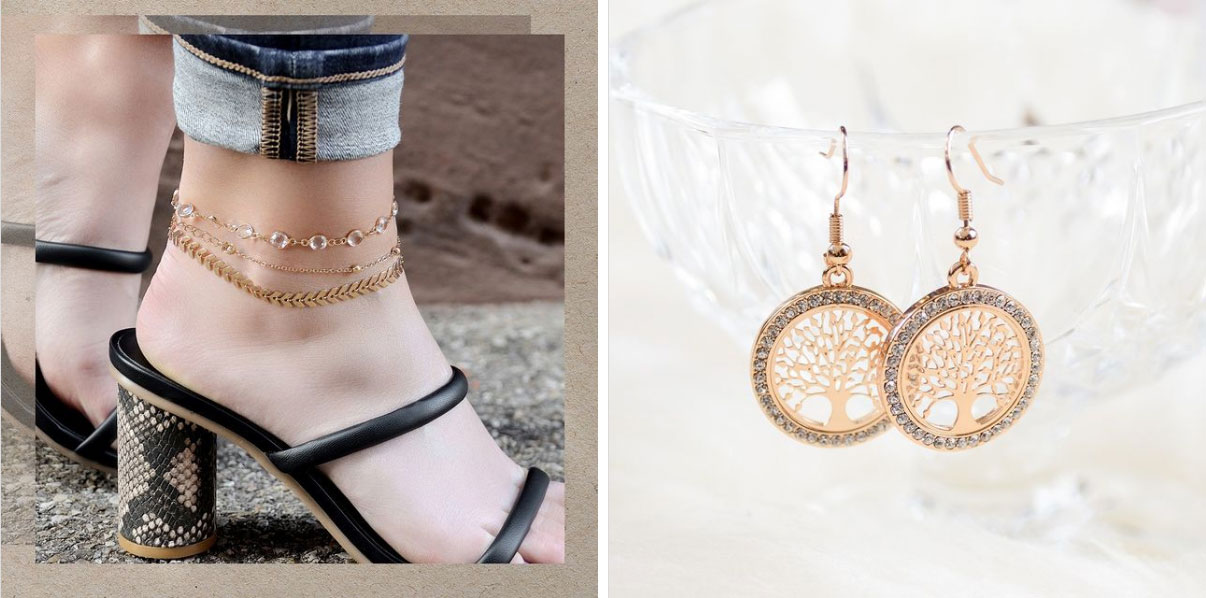Take your ’Gram from good to great with retail-focused advice from these digitally savvy jewelers and marketers
When Instagram was introduced in October 2010, the photo-sharing platform was a social media minnow entering some fast-moving, predatory waters.
After 11 years and a $1 billion acquisition by Facebook, however, the app now stands tall as one of the social media elite. With more than 1 billion monthly active users, half of whom are daily active users, Instagram is firmly entrenched among the world’s most important and far-reaching social media platforms—with immense potential for small businesses like jewelry retailers.
From upstart e-tailers to multigenerational family-owned stores, jewelers are discovering that Instagram offers a highly visual, widely accepted way to showcase products, drive brand awareness, and generate sales, particularly among the younger consumers (those under age 35) who make up more than two-thirds of the platform’s users.
But merely having a presence on Instagram is not enough to capture those benefits. Success on the ’Gram takes calculated thought, strategic action, and ongoing effort. Below, we present 18 takeaways guaranteed to up your Insta-game, whether you’re a social media newbie, a skillful operator, or a pro.
THE TABLE STAKES
Post with a purpose and a plan.
At Aphrodite’s, an online jewelry retailer that has made aggressive use of Instagram, chief marketing officer Caroline Park champions content that is aesthetically beautiful and authentic, and provides value. She touts the three E’s: engaging, entertaining, and educational. Posts from jewelry shops can vary from brilliant product shots and behind-the-scenes videos spotlighting custom work to user-generated content—a soon-to-be-bride showing off her engagement ring, for example—complete with a unique hashtag from the store.
Stay committed.
Instagram is a visual feed and jewelry is a visual product, so the two naturally work well together. They work best, however, when stores consistently post compelling content.
Use a scheduler.
Tools like Hootsuite, Buffer, and Loomly allow businesses to schedule Instagram posts in advance. This helps drive an ongoing stream of content and promotes more intentionality and strategy.
Create an Instagram-worthy physical space.
Recognizing the value of user-generated content, restaurants and retail establishments have created unexpected, photo-prompting environments in their stores, such as murals, neon signs, and sculptural pieces. “When someone sees something unique, they pull out their phone and post, and that becomes free advertising for your business,” says Holly Wiese, founder of 3 Dots Design, a Boulder, Colorado–based firm that specializes in retail design.


Make customers feel special.
Bring followers into an exclusive, insider club by providing early access to sales or special events on Instagram, sharing first looks at new products, or relaying up-and-coming trends spotted at an industry event.
Educate.
Devin Schumacher, founder of SERP Co., a digital marketing agency based in Pasadena, Calif., encourages subject matter experts—which jewelry retailers certainly are—to dispense knowledge on Instagram. Stores might offer engagement ring shopping tips, address misconceptions about diamonds, or introduce a rising young designer. “People love to get the scoop from people who truly know what they’re talking about,” Schumacher says, adding that learning while browsing is an “unintended positive outcome” followers enjoy and remember.
Engage.
Use the channel to like, comment on, and respond to others. This not only deepens connections with followers, but also helps with Instagram’s algorithms.
Target locals.
Though Instagram is a global platform, Savannah Hobbs of 1000heads in New York City, a social-first digital marketing agency, emphasizes that the app offers targeted geo-based advertising through Facebook Ads Manager that allows brick-and-mortar retailers to reach people who reside near a store location.
BEYOND THE BASICS
Pull the right Instagram lever.
Every tool on the ever-evolving Instagram platform has its own advantages and, quite often, a best use. While Reels, Stories, and static posts are often most effective for highlighting products or sharing news, IGTV and Live are best used as storytelling channels to offer more depth.
Solicit feedback.
Use Stories to ask customers questions or design polls to spur engagement. This feedback can help shape operations, inventory, and marketing.
Lean into IGTV.
Jewelry retailers can use IGTV—Instagram’s tool for longer-form videos—to showcase their inventory and to provide education on products and services, such as a particular category of product or custom work.
Go live.
Instagram Live can generate hype around products and do so in a way that doesn’t feel “salesy.” Of note, Instagram began allowing users to upload live videos to IGTV in May 2020. Those videos then remain on Stories for at least 24 hours.
Get “Reeling.”
Instagram is pushing Reels to the forefront of its platform. Launched in August 2020 (no doubt as a response to the popularity of TikTok), Reels are video clips of 15–30 seconds set to music. “These days, Reels are hot and will get you reach outside your followers,” Park says.
Take advantage of new functionalities.
For instance, Instagram now allows video chat in direct messages, which enables jewelry stores to address inquiries and showcase jewels in a more dynamic, interactive way. The Remix feature on Reels, meanwhile, lets a user record a second screen in Reels to stimulate creativity and interaction.



GOING NEXT LEVEL
Tap into influencers.
Instagram remains the most popular platform with influencers, who continue to hold sway in the marketing game. Partnering with influencers to promote in-store products can generate brand awareness, buzz, and virality, Park says. And these need not be A-listers. In fact, micro-influencers and nano-influencers, particularly those with local notoriety, could prove especially impactful. Jewelry stores might even look for potential partners amid their current followers, suggests Solomon Thimothy, cofounder of marketing software tool Clickx, based in Chicago.
Diversify content media.
Posting varied content not only better engages followers, but also helps a business gain traction with new audiences and appease Instagram’s engineers. “The algorithm will punish your feed if you’re not posting a combination of IGTV, Reels, grid posts, and interactive stories throughout your week,” says Yuvi Alpert, founder of direct-to-consumer New York City–based jewelry brand Noémie.
Embrace social commerce.
Today, retailers can sell their goods directly through Instagram—and consumers are increasingly buying. To set up social commerce on Instagram, jewelry shops must have a business account connected to their store’s Facebook page. Thereafter, stores can upload their product catalog (via their Facebook page, Facebook Business Manager, or an e-commerce platform like Shopify), turn on the shopping feature, and add shoppable tags to posts.
Blend it together.
Once store owners have a strong hold on Instagram functionalities and strategies, they can spin different ideas together. Hobbs, for instance, has observed a significant rise in live commerce of late. “Especially with an item like jewelry,” she says, “working with a key opinion leader or influencer who can tastefully sell the store’s products during a live feed could be an efficient way for stores to acquire more customers.”
(Top photo: Getty Images)
